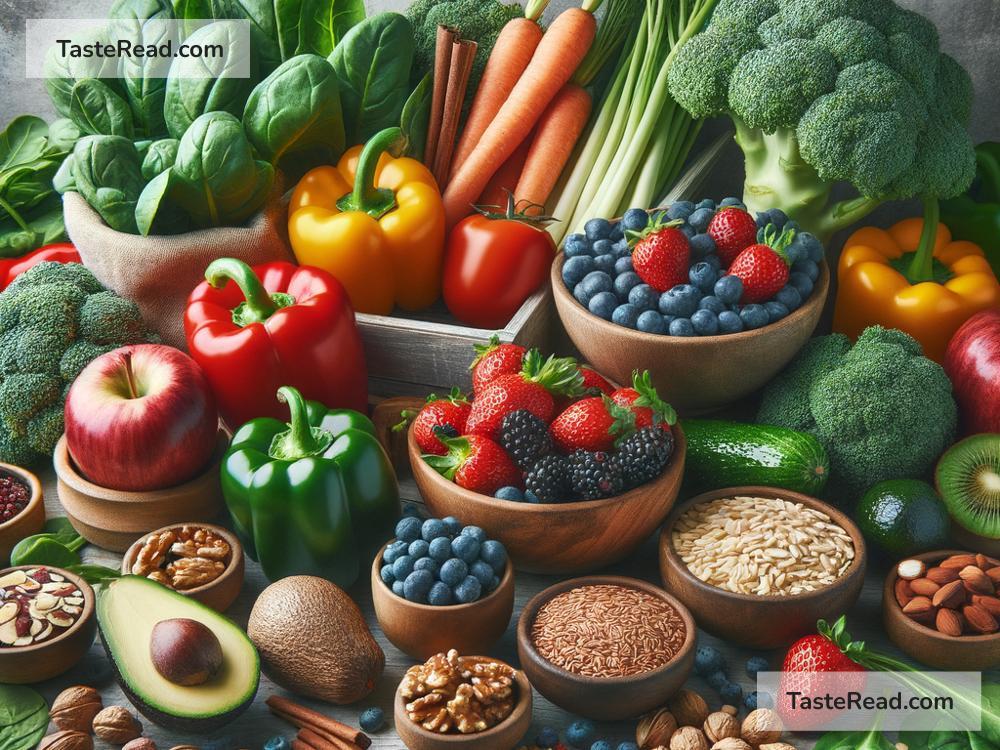Foods That Reduce the Risk of Diabetes
Diabetes is a growing health problem around the world, affecting millions of people. While there are many factors that contribute to diabetes, one major way to reduce your risk is to make smart food choices. A healthy diet can help control blood sugar levels, support weight management, and keep your body working properly. In this blog, we will talk about foods that are known to reduce the risk of developing diabetes. The best part? These foods are delicious and easy to add to your meals!
What Is Diabetes?
Before we dive into the foods, let’s quickly understand what diabetes is. Diabetes happens when your body struggles to control blood sugar levels. Blood sugar, or glucose, is your body’s main source of energy, and insulin (a hormone made by the pancreas) helps your body use glucose the right way. With diabetes, either your body doesn’t make enough insulin or it can’t use insulin properly, leading to high blood sugar levels.
There are two main types of diabetes:
-
Type 1 Diabetes: This is an autoimmune condition where the body attacks the cells that make insulin. It usually starts in childhood or adolescence.
-
Type 2 Diabetes: This is more common and happens when the body becomes resistant to insulin or doesn’t produce enough insulin. Lifestyle factors, such as diet, play a big role in Type 2 diabetes.
The good news is, Type 2 diabetes can often be prevented with healthy habits — like eating the right foods!
Foods That Help Reduce Diabetes Risk
The following foods have been shown to help regulate blood sugar, reduce inflammation, and improve overall health. Incorporate them into your meals when you can!
1. Leafy Green Vegetables
Leafy greens like spinach, kale, and collard greens are packed with nutrients but very low in calories and carbohydrates. They are rich in fiber, which helps slow the absorption of sugar into your bloodstream, preventing blood sugar spikes. Leafy greens also contain magnesium, which has been linked to better insulin sensitivity.
How to Eat Them: Add spinach to your morning smoothie, toss kale into salads, or sauté collard greens with garlic for a tasty side dish.
2. Whole Grains
Unlike refined grains (like white bread or white rice), whole grains like quinoa, brown rice, oatmeal, and whole-wheat bread contain fiber and nutrients that help regulate blood sugar levels. Fiber slows digestion, preventing your blood sugar from rising too quickly.
How to Eat Them: Swap white rice for brown rice, or start your morning with a bowl of oatmeal topped with berries and seeds.
3. Berries
Fruits like strawberries, blueberries, raspberries, and blackberries are naturally sweet but won’t cause massive blood sugar spikes. Berries are high in antioxidants and fiber, making them the perfect healthy treat for people at risk of diabetes.
How to Eat Them: Blend berries into a smoothie, mix them with yogurt, or eat them fresh as a snack.
4. Nuts and Seeds
Nuts like almonds, walnuts, and pistachios, and seeds like chia seeds and flaxseeds, are rich in healthy fats, protein, and fiber. These nutrients help keep you full longer and prevent unhealthy snacking that can lead to spikes in blood sugar. Plus, nuts contain magnesium and healthy fats that support better insulin function.
How to Eat Them: Sprinkle chopped nuts on your salads, or enjoy a handful of almonds as a snack. Add chia seeds to your oatmeal or drinks for extra nutrition!
5. Fatty Fish
Fatty fish like salmon, mackerel, and sardines are rich in omega-3 fatty acids, which reduce inflammation and lower the risk of heart disease, a common complication of diabetes. Omega-3s may also improve insulin sensitivity.
How to Eat Them: Grill or bake salmon for dinner, and pair it with a side of vegetables and whole grains.
6. Beans and Lentils
Legumes like beans, lentils, and chickpeas are packed with fiber and protein, making them a great option for stabilizing blood sugar and supporting overall health. Their high fiber content slows down how quickly carbohydrates are absorbed, preventing spikes in glucose.
How to Eat Them: Add lentils to soups, make a chickpea salad, or mix beans into a burrito bowl.
7. Greek Yogurt
Greek yogurt is a great source of probiotics, which may improve gut health and help break down sugar in your body. It’s also high in protein, which keeps you full and reduces your cravings for unhealthy snacks. Just make sure to opt for plain, unsweetened Greek yogurt.
How to Eat It: Add fresh fruit and nuts to plain Greek yogurt for a tasty and healthy breakfast.
8. Herbs and Spices
Certain herbs and spices like cinnamon, turmeric, and fenugreek have been shown to help regulate blood sugar levels. Cinnamon, for example, may improve the way your body responds to insulin, and turmeric has anti-inflammatory properties that benefit overall health.
How to Use Them: Sprinkle cinnamon on oatmeal or coffee, and use turmeric in soups, curries, or tea.
Healthy Eating Habits
While adding these foods to your diet is a great step, it’s important to pair them with other healthy eating habits:
- Limit added sugars and processed foods. These can cause sharp spikes in blood sugar.
- Choose smaller portions. Eating too much, even of healthy foods, can raise your blood sugar.
- Stay hydrated with water. Avoid sugary drinks like soda or sweetened juices.
Conclusion
Preventing diabetes doesn’t mean following a complicated or restrictive diet. By simply choosing the right foods — like leafy greens, whole grains, berries, nuts, fatty fish, and beans — you can take control of your health and reduce your risk of diabetes. Combine these foods with other good habits, like regular exercise and proper sleep, and you’re on your way to living a healthier and happier life!
Start small, and over time, you’ll notice the positive impact these foods have on your body. Your future self will thank you!


